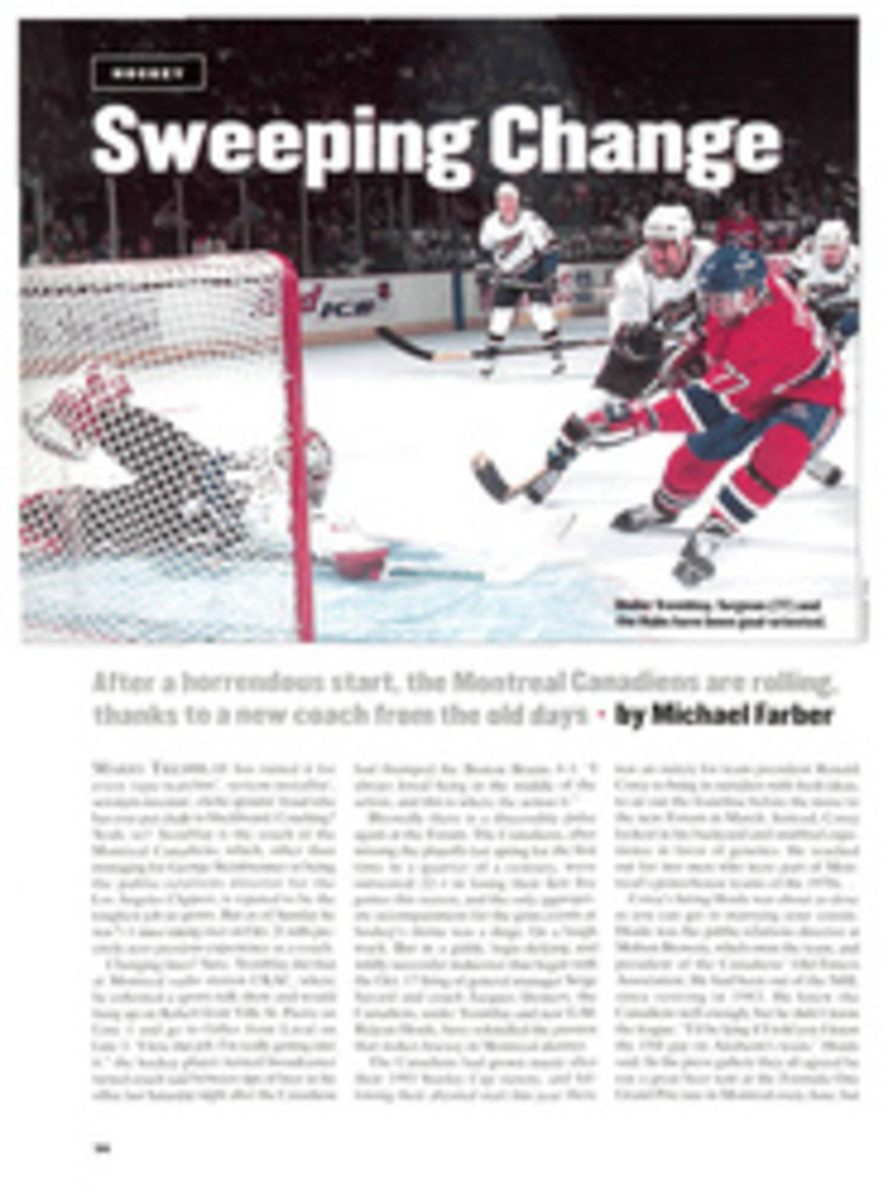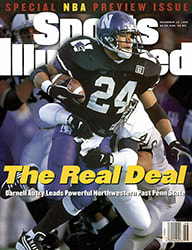
REBORN A LEGEND'S HOME MAKES A COMEBACK, AND A DIFFERENCE
It is a scene right out of When Worlds Collide. On a
garbage-strewn side street off Atlanta's Second Avenue, a man is
lying under his jacked-up car, trying to get the damn thing
started. Around the corner, above a crumbling sidewalk,
cinder-block buildings, tagged by gang artists and pockmarked by
the occasional stray bullet, stare blankly through boarded-over
windows at strange goings-on across the street. There, in all
its incongruous glory, sits the refurbished East Lake Golf Club,
the home of Bobby Jones and the centerpiece of what might be the
most innovative golf course development in the country.
To outsiders, the undertaking at first seems cruelly
inappropriate, its grand scale mocking the humble neighborhood.
What's this? Golf comes to the ghetto? Closer inspection reveals
that it's not like that at all. East Lake has always been here,
a part of the place. A swath of East Lake was once sliced away
so that public housing could be erected on what had been lush
fairways. No, this project is not about putting up walls. It's
about putting a neighborhood back together. And it's about Bobby
Jones.
East Lake once was one of the most famous golf clubs in America
solely because of Jones, the most famous golfer in the world.
When, in 1907, a five-year-old Bobby came down with whooping
cough and the measles, the Jones family moved to a converted
barn behind East Lake's second green. Although he traveled
around the world, winning 13 major championships including the
Grand Slam in 1930, Jones always came back to East Lake. Most of
his golf was played there after he retired, at 28, to practice
law. Jones played his last round at East Lake on Aug. 15, 1948.
Shortly thereafter, he quit playing because of syringomyelia, a
nerve disorder that causes progressive paralysis. He died in 1971.
East Lake's decline mirrored Jones's. The year he died, part of
the property was sold to the Atlanta Housing Authority. Over the
next two decades, as the neighborhood slowly spiraled downward,
so did what remained of East Lake Golf Club. Two years ago East
Lake's members, separated from their neighbors by Cyclone fences
topped by razor wire, were on the verge of packing it in. Enter
Tom Cousins.
At 63, Cousins is one of the richest men in Georgia and the
largest developer in Atlanta. He bought East Lake for $4.5
million, but knew that that was just the start of his
investment. He intends to do what the government has in his
opinion failed to do: launch a successful urban-renewal project.
In short, here's how it works: first, restore the original
course, making it a shrine to Jones. Then sell high-dollar
memberships, a hefty portion of the fees going to buy and
bulldoze East Lake Meadows and in its place construct 175 acres
of new housing and a second, public, 18 holes. Voila! Instant
low-income golf community.
The first step has been taken. The renovation of the original
Donald Ross-designed course and its clubhouse has been
completed, to the tune of $25 million. Rees Jones redid the
course by working from old aerial photos, and the golf
establishment is impressed. The U.S. Golf Association awarded
the 2001 U.S. Amateur to the club. The PGA of America is talking
about bringing in the Ryder Cup--East Lake hosted the matches in
1963--while the PGA Tour views East Lake as a site for the 1998
Tour Championship or a President's Cup.
Perhaps more important has been the groundwork laid within the
East Lake Meadows community, where the project was at first
viewed skeptically. The fact that 400 to 450 families will be
displaced during construction and only 250 allowed to return--the
rest are promised "blight-free" housing by the Housing
Authority--set off alarms. There are fears that this is all about
a rich developer simply wanting to improve the neighborhood in
order to protect his investment in a golf course.
Cousins scoffs at these notions. "There ain't any hidden agendas
here. Nobody is making money off this," he says. "This is a way
to address a problem. We hope to become a model."
Candice Bolston, chairman of the East Lake Planning Unit
neighborhood association, is ready to get onboard. "At first it
was some rich person coming in and buying and doing what he
pleased," she says, "but as soon as we saw there was a
willingness to give back, we started to appreciate it more. It
sounds like this is something that has been pressing on Mr.
Cousins's heart."
Bobby Jones would have liked that.
TWO COLOR PHOTOS: PHOTOGRAPHS BY JIM GUND East Lake's clubhouse and course (top) received a $25 million face-lift, but Jones's double locker was untouched. [East Lake Golf Club's clubhouse; Bobby Jones's double locker]
COLOR PHOTO: PHOTOGRAPHS BY JIM GUND Cousins plans to replace the East Lake Meadows housing project with a second 18 and low-income homes. [Aerial view of East Lake Meadows housing project]

